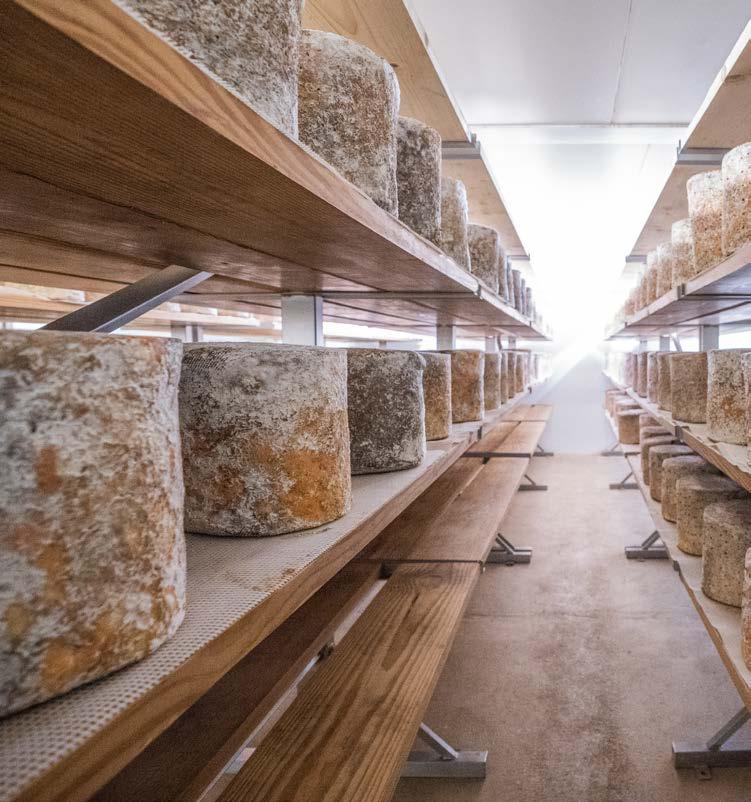
3 minute read
Going international - BIC Innovation
In our modern connected world, where we’re bombarded by content from all four corners of the globe, it remains surprising how few businesses develop their brands and products on the international stage.
Invariably, exports or international sales within a business are seen as a problem child – slightly hard work, needing time and attention, and rather daunting. So the response is often: ‘I’ll put that to one side with my ‘other accounts’.’ And as a result, Britain ranks below Greece in the proportion of small and medium sized enterprises (SMEs) exporting their goods and services.
On the positive side, Britain has a long tradition of trading and historical connections with many parts of the world. International businesses like doing business with UK companies. We have a reputation of high standards of manufacturing, leading-edge innovation, first-to-market product development and stand-out design.
So how can you establish an international market for your brand or product? The cornerstone to building a rewarding international business base is to develop the right strategy. Don’t expect to rule the world from the word go; having a clear, step-by-step plan for international sales is key to getting stakeholder engagement across the whole business. Being clear about what you are looking to achieve, how you plan to achieve it and – most importantly – what that success will deliver, will help with the journey.
The word ‘export’ doesn’t really do justice to what you are looking to achieve. What you are really trying to do is market your brand to an international audience. So start with the basics, just as you would in your domestic market, and break the strategy down into manageable pieces.
Brand attractiveness:
• Why is my brand unique? • What are my brand’s strengths and its distinctiveness • Will my brand’s unique selling point (USP) translate to an international market?
Market attractiveness:
• Is my brand relevant to that market? Conduct market research • Where is there already a consumer need for my product? • What are the barriers to entry? Competition, environment and regulatory requirements.
Operational review:
• How do I want to service the market? • Do we have the capability to manage the market direct? • Should we adopt a distributor-based model and conduct distributor search and assessment? • Pricing strategy – what do I need to invest to gain scale/brand awareness, and what will be the return on our investment?
Once you’ve identified the three or four key markets where you are looking to develop international sales, remain focused on getting to know these markets, their consumers, your partners or your customers. Spend time in the market – you can’t grow that market by staying put in the UK. If you are working with a distributor or partner, make sure they share your brand values and become part of your team. Get
them to visit your business, introduce them to key people and share with them how the brand developed in your home market.
Choosing the right market to launch into is important. Marketers refer to the ‘ethnocentric approach’; this means choosing a market where the people are a similar demographic to the market or home that the brand and product range have grown up in. Australia is often used as an example.
However, don’t be restricted by that. Sharing a language is one thing, sharing a palate is another. It’s often said that American products, such as confectionery, are not successful in the UK because the sweetness or flavours that appeal to American tastes are not as popular with UK consumers. How would your product compare with the target market? Packaging formats are often a key consideration too. Consumers unconsciously associate some formats with certain products. You wouldn’t put a child’s soft drink in a pack associated with non-food products here, so a quick audit of suitable pack formats and the size for a given price point or shelf is just as important in export planning as it is in the UK.
The list of considerations is seemingly endless, and the unknowns are even more complicated while Brexit remains unresolved. However, getting advice, feedback and ensuring
“The cornerstone to
a good understanding of the legislation and labelling requirements are all as important as the flavours, pack size and suitability for the target market.
Fortunately, there’s plenty of support to help you. BIC Innovation’s Food and Drink Export team has many years’ experience, and are on hand to help businesses in the South West take their first steps towards building international brands.
Michael Evans, Senior Food Export Associate, BIC Innovation www.bic-innovation.com









